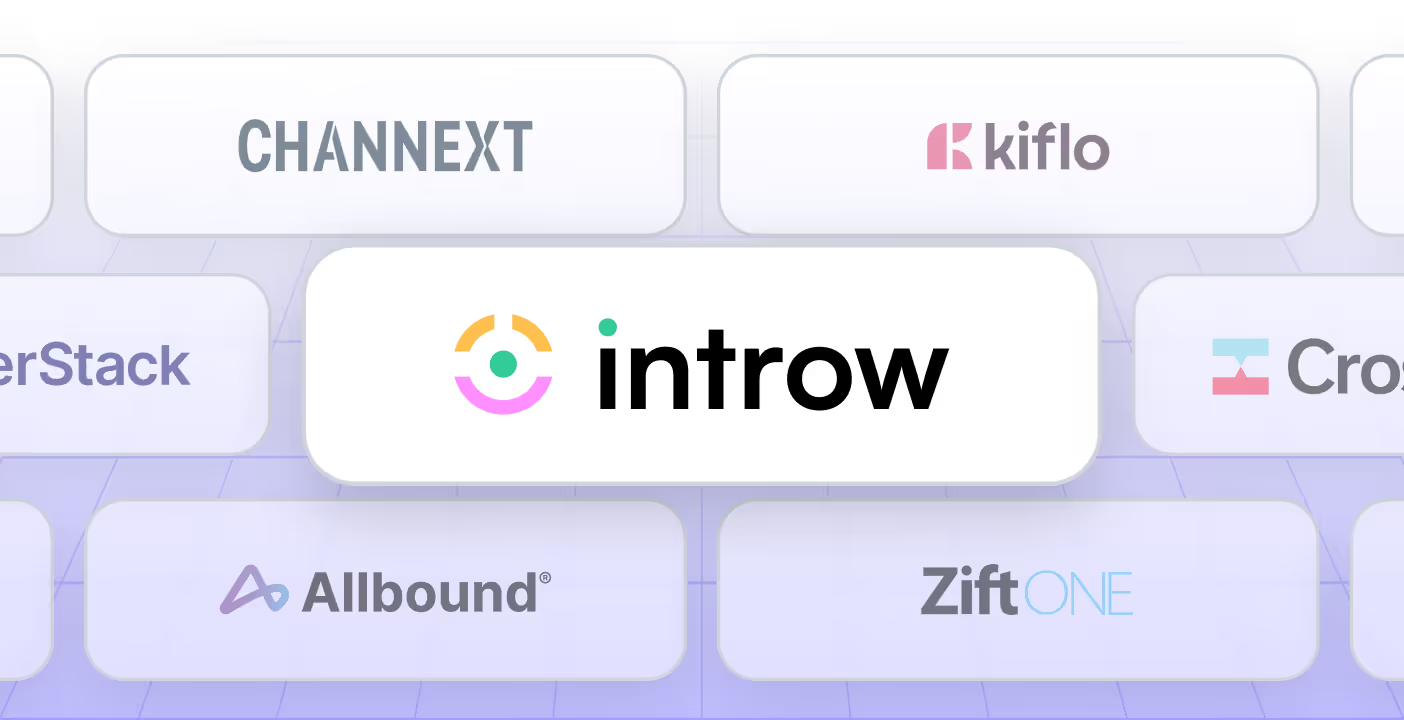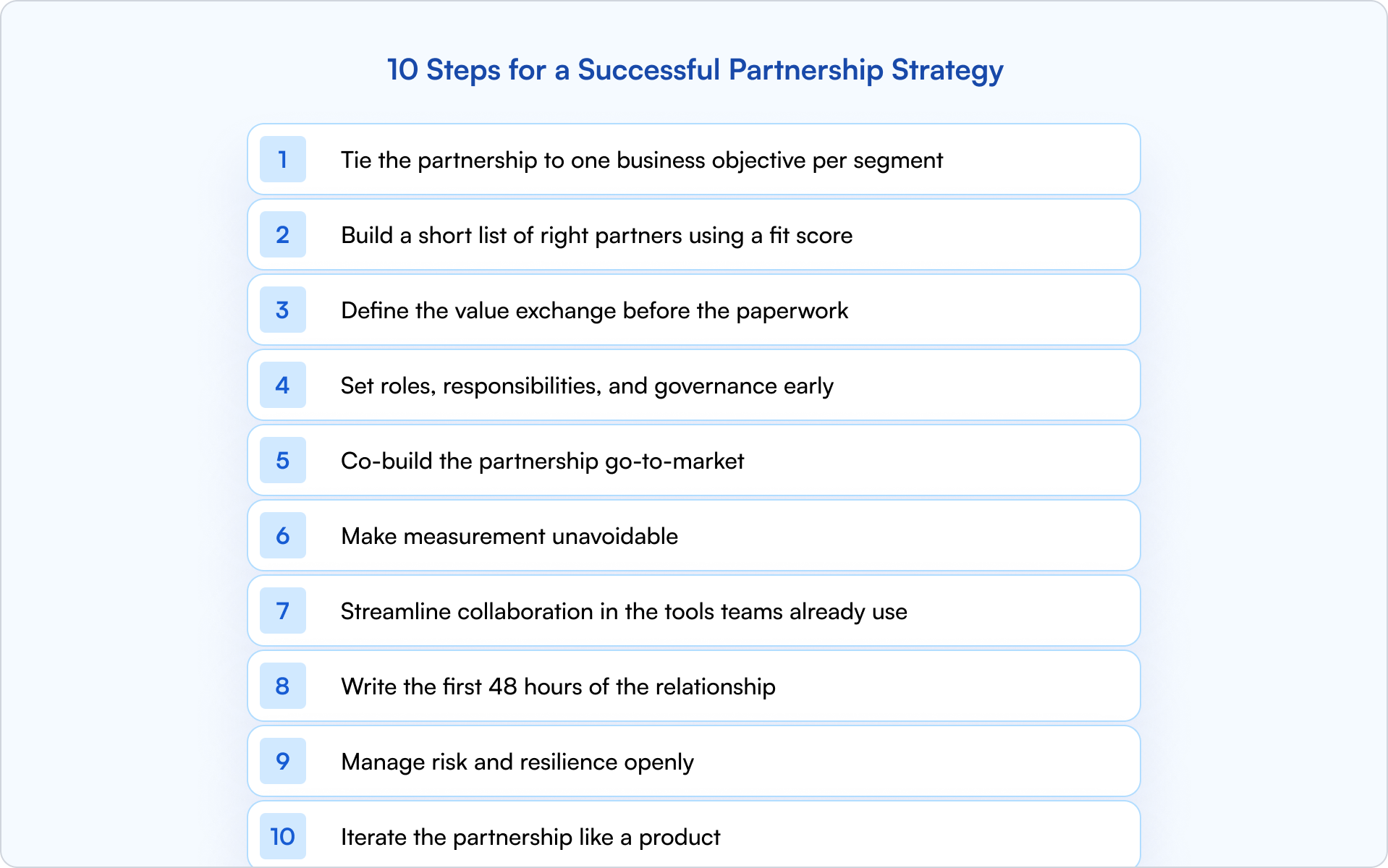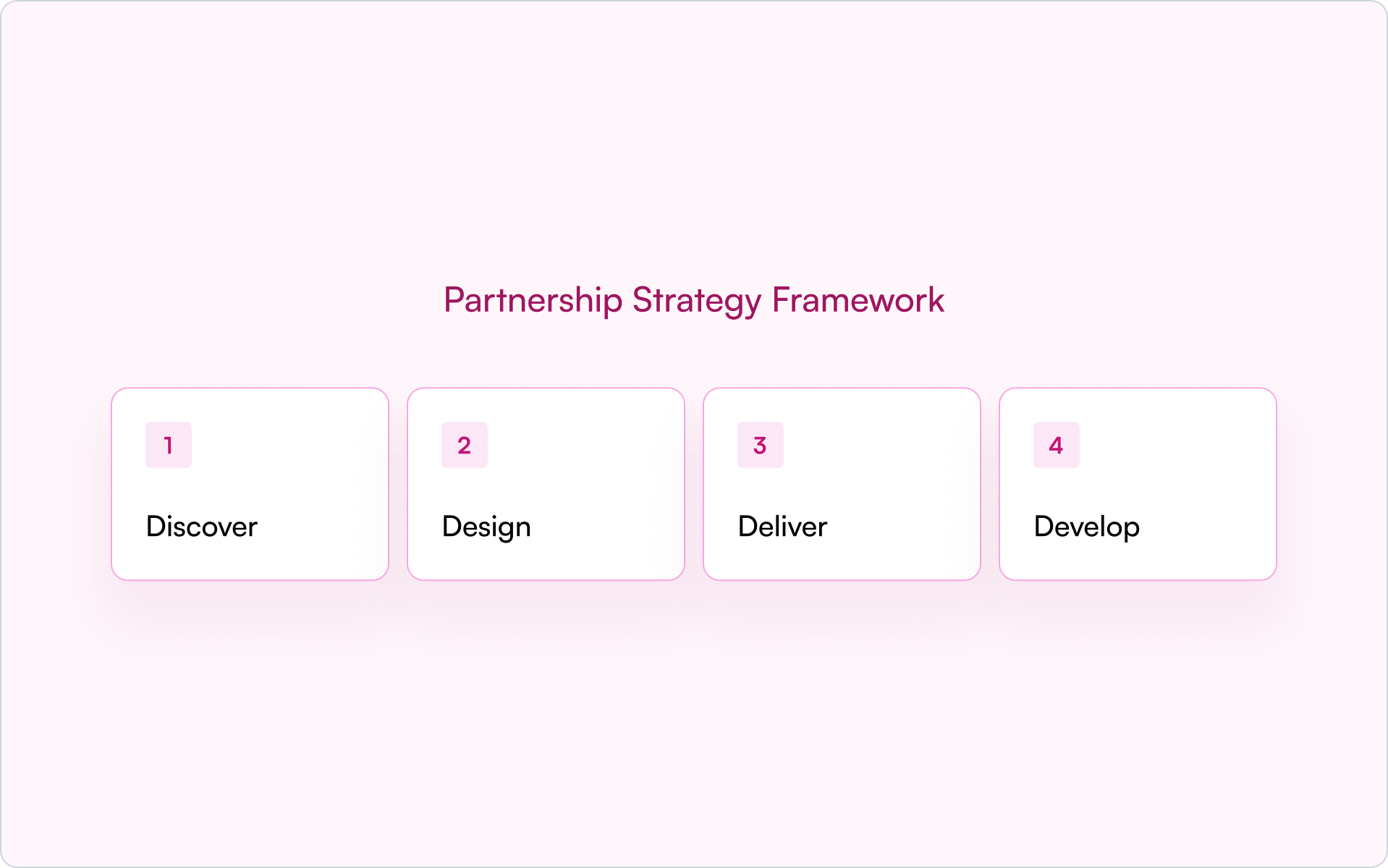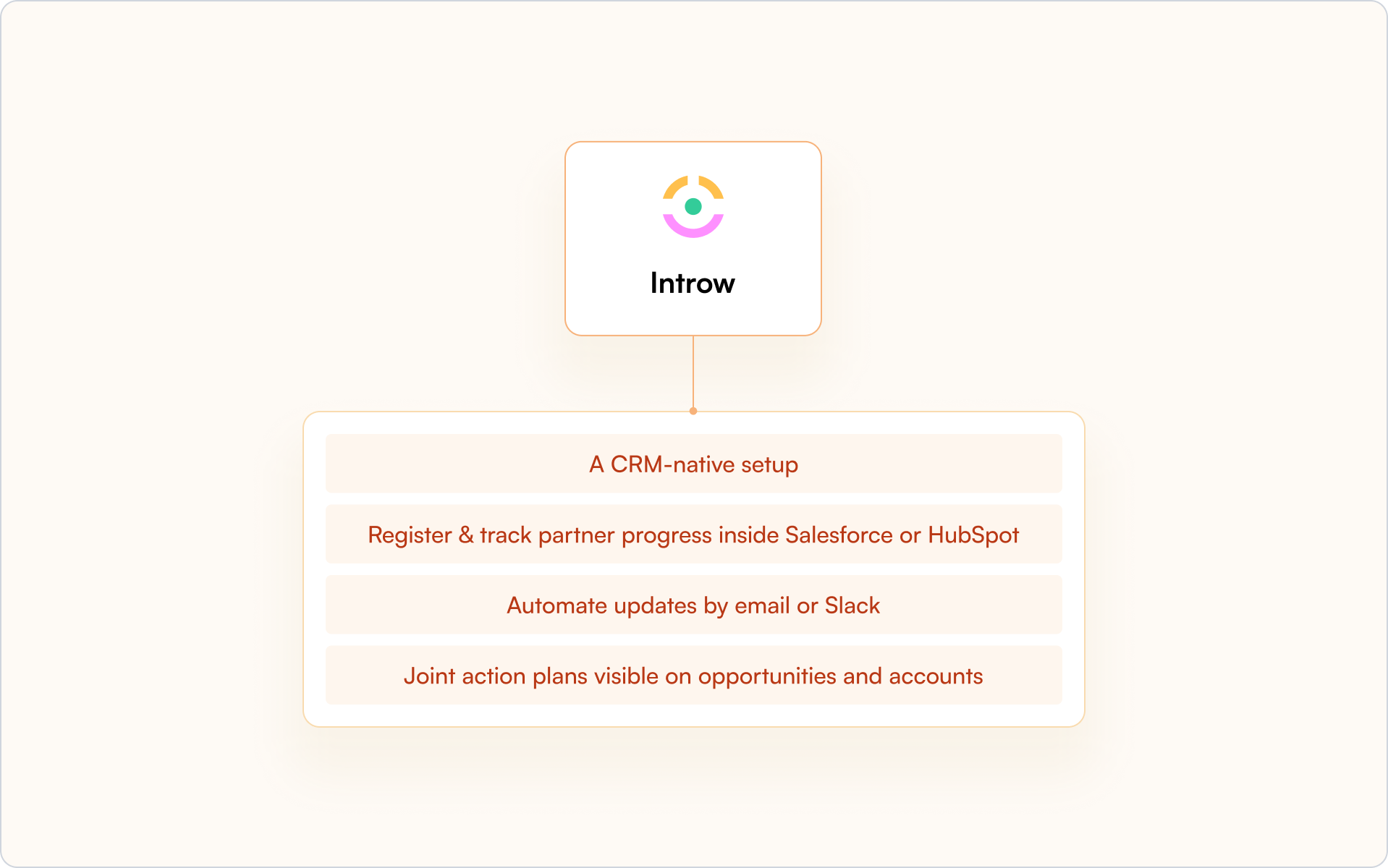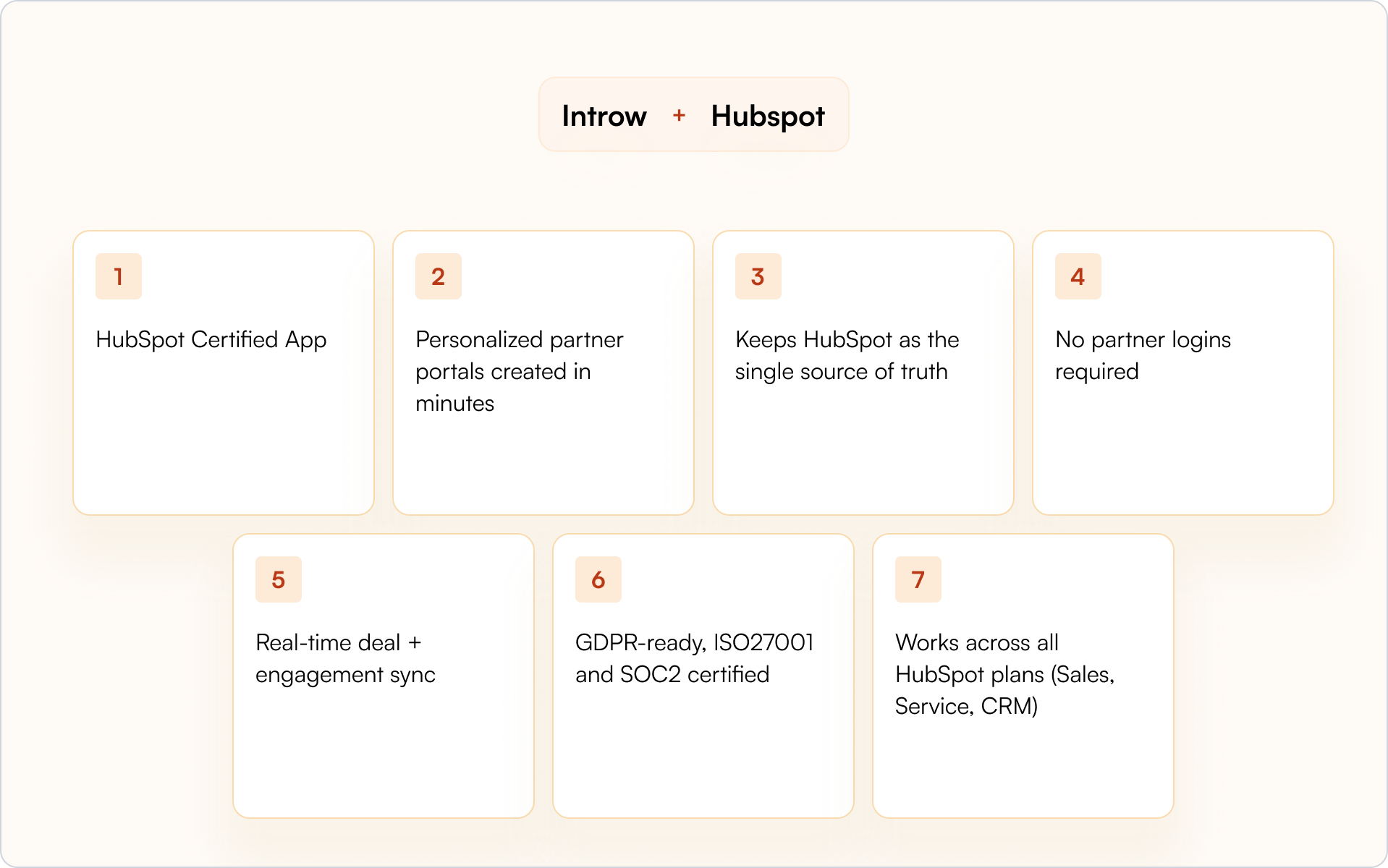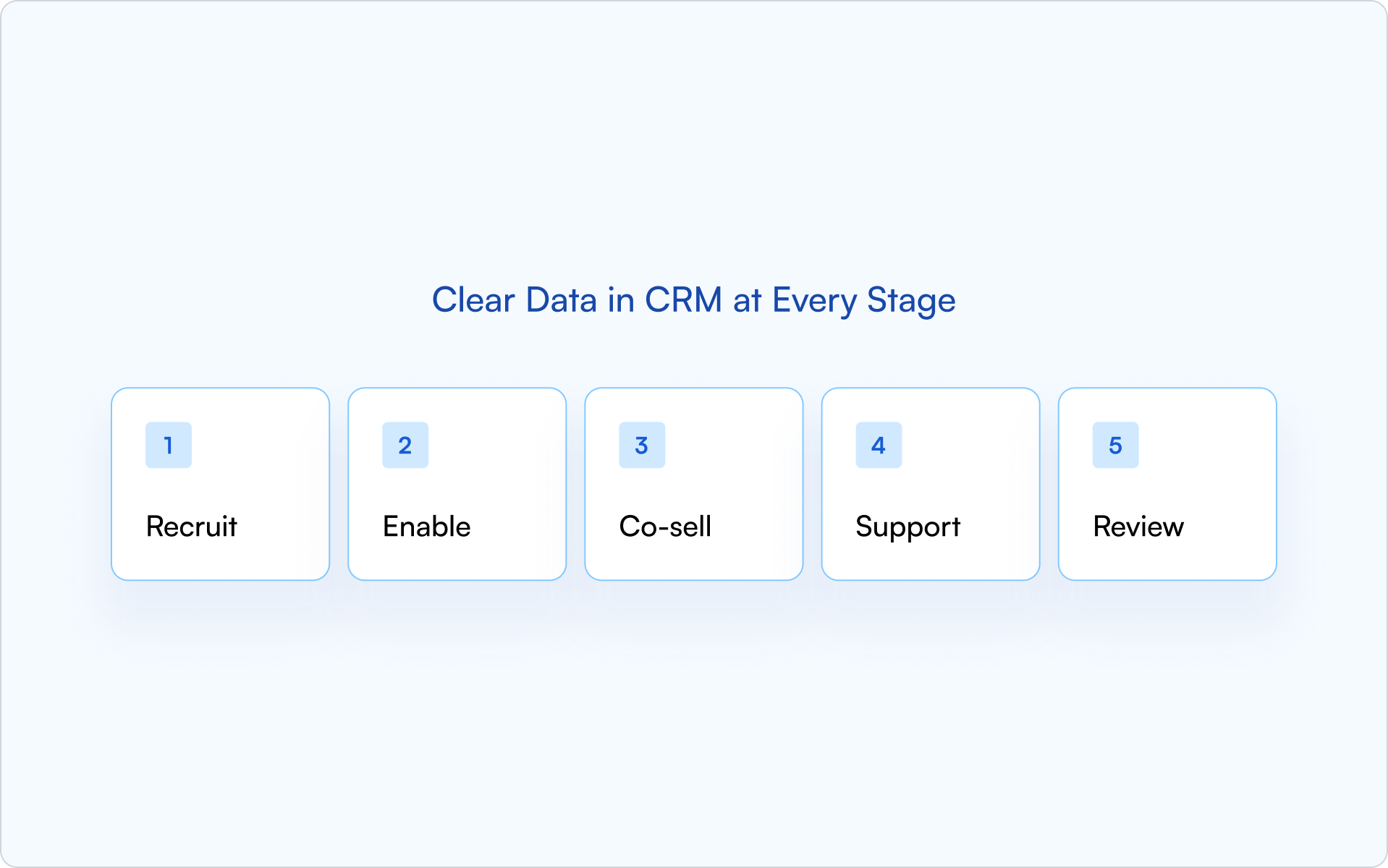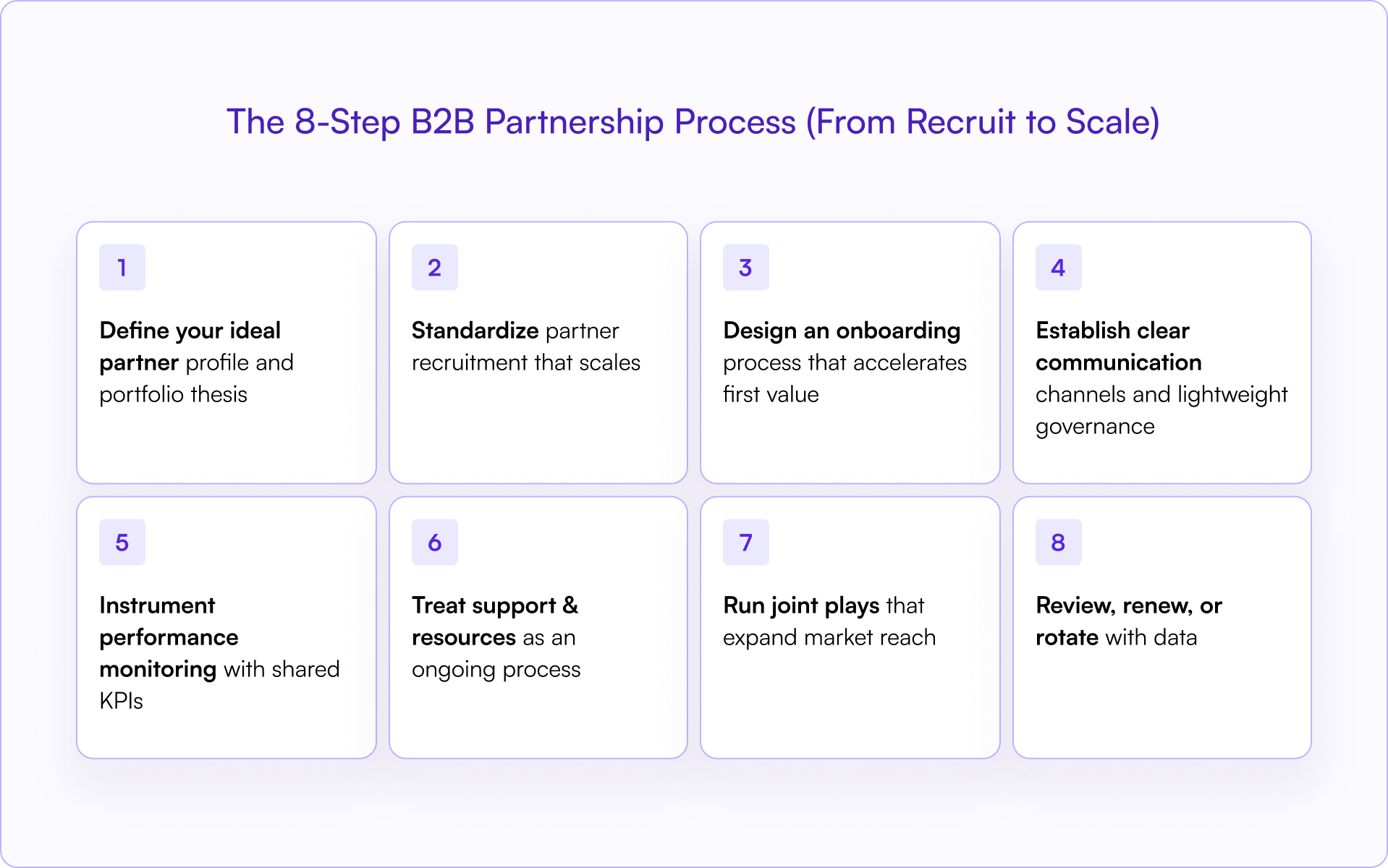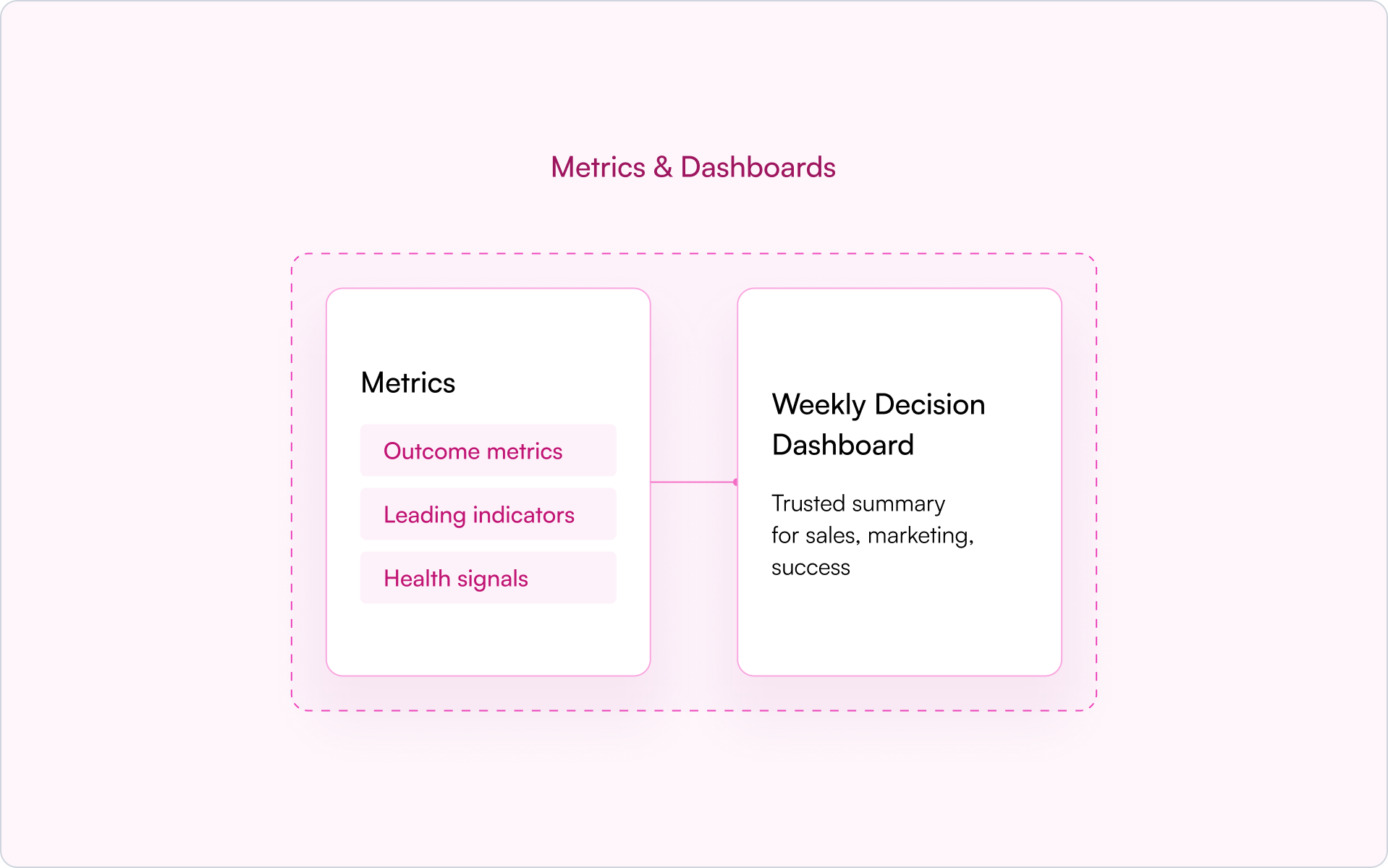While partner platform PartnerStack works well for some businesses, it can fall short for SaaS teams needing deep CRM integration, a custom partner portal, and more reporting and automation capabilities.
If you're struggling with data silos, limited automation, or partner portals that don't work with your needs, it's time for a change.
Look for a solution built for RevOps, embedded in your CRM, and focused on revenue—not vanity metrics.
➡️ Explore why Introw is a top PartnerStack alternative — book your live demo today.
Why Look for a PartnerStack Alternative in 2025?
As the SaaS landscape evolves, businesses must continually re-evaluate their partnership management tools.
While PartnerStack remains a strong contender, shifting needs around customization, reporting, automation, and integration options may prompt some SaaS brands to explore alternatives that better align with their growth strategies and tech demands.
Is it time for your business to consider PartnerStack alternatives?
Read on to find out.
Where PartnerStack Falls Short for Scaling SaaS Teams
PartnerStack can help launch a partner program — but once you're driving real revenue through partners, it often hits its limits.
Here are three common friction points for SaaS companies trying to scale with PartnerStack:
1. CRM Disconnect
A lack of seamless integration with your CRM can lead to data silos, duplicated work, and missed opportunities for cross-team alignment.
In short — a headache.
After all, when your sales and partnership marketing platforms don't speak the same language, efficiency and visibility suffer.
Instead, look for partner management platforms that are fully embedded in your CRM.
2. No Off-Portal Collaboration
If your partners have to log into a portal just to stay in the loop, you're already creating friction. PartnerStack requires portal access for updates or engagement — which often leads to drop-off and delays.
There’s no support for off-portal collaboration, like replying to deal updates via email or Slack and having it sync back to your CRM. That disconnect slows down momentum and makes it harder to keep partners engaged.
Modern partner teams need tools that meet partners where they are — with frictionless, off-portal collaboration baked in.
3. No Customizable Portal Experience
As your partner program matures, a one-size-fits-all portal just doesn’t cut it. PartnerStack offers limited flexibility when it comes to customizing the partner experience — making it hard to support different partner types, tiers, or regional nuances.
If your team needs to tailor onboarding, branding, or workflows for referral partners vs. resellers vs. MSPs, PartnerStack likely falls short.
Look for platforms that offer fully customizable, white-labeled portals with CRM-driven logic — so every partner gets the right experience, at scale.
What to Look for Instead
If you've decided it's time to move on from PartnerStack, what should you be looking for from your partner management system?
1. CRM-Native with Real-Time Sync
In 2025, your partner platform must live inside Salesforce or HubSpot. That means native CRM integration — not just pushing spreadsheets into a dashboard. Real-time deal sync, automated registration, and shared pipeline visibility help you eliminate silos and keep everyone on the same page.
2. Frictionless Off-Portal Collaboration
Look for tools that make it easy for partners to engage without logging in — think Slack or email updates that sync directly to your CRM. Off-portal collaboration keeps momentum high and ensures reps and partners stay aligned in real time, not stuck chasing each other across platforms.
3. Custom-Branded, Flexible Partner Portal
Your partner portal should reflect how your business operates — not force you into a rigid template. Look for a PRM that lets you fully customize the portal layout, branding, and workflows to match your processes, partner model, and go-to-market motion. From content to deal reg flows, every part should feel like an extension of your company — not a bolt-on.
If PartnerStack is starting to slow your momentum — whether due to collaboration friction, limited CRM alignment, or lack of customization — it’s worth evaluating purpose-built tools designed for scale.
Let’s see…
Top PartnerStack Alternatives to Consider
When considering moving on from PartnerStack, it's essential to explore your options and identify the best fit for you.
1. Introw — Best CRM-Native PRM for SaaS Teams
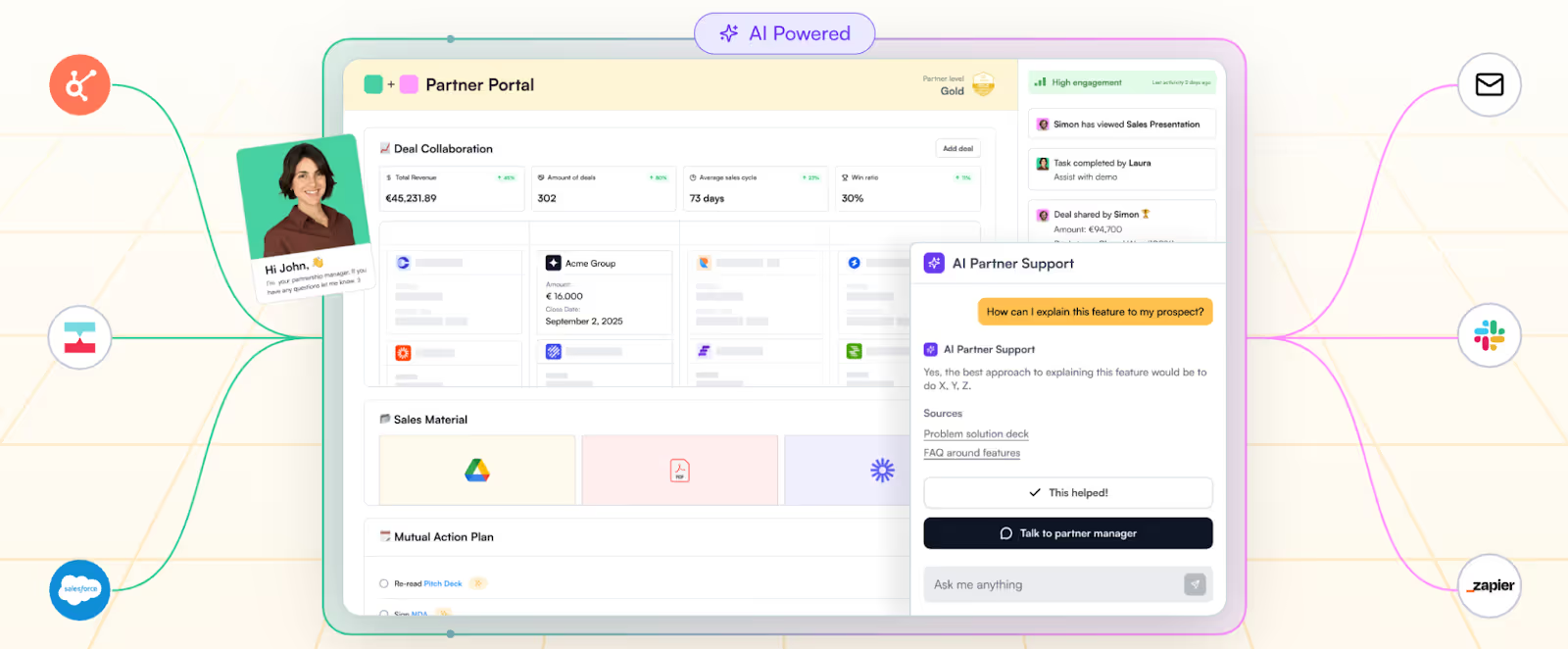
Introw is a sophisticated partnership relationship management (PRM) platform with deep Salesforce and HubSpot integrations.
Its CRM-first approach ensures that partnership data — such as leads, deals, engagement, and pipeline metrics — flows automatically between Introw and your CRM, keeping Salesforce or HubSpot as your single source of truth.
Other Introw highlights include:
- Real-time co-selling
- No-code partner portal builder
- AI Agent, providing 24/7 support to your partners
- No login needed for partners — off-portal experience
- Real-time deal reg, forecasting, and MAPs
- Modular workflows (referral, reseller, etc)
- Slack sync for nudges, updates
- Strong RevOps and CCO/CRO alignment
- Transparent pricing
Who Is Introw Best For?
Introw is perfect for SaaS teams with two or more partner managers and who already use (or intend to use) Salesforce or HubSpot.
Pricing: Introw is free for one partner. Its basic tier starts at $329 per month for ten partners, Pro costs $579+ per month for ten partners, and Enterprise pricing is bespoke. Book a live demo here.
2. Partnero
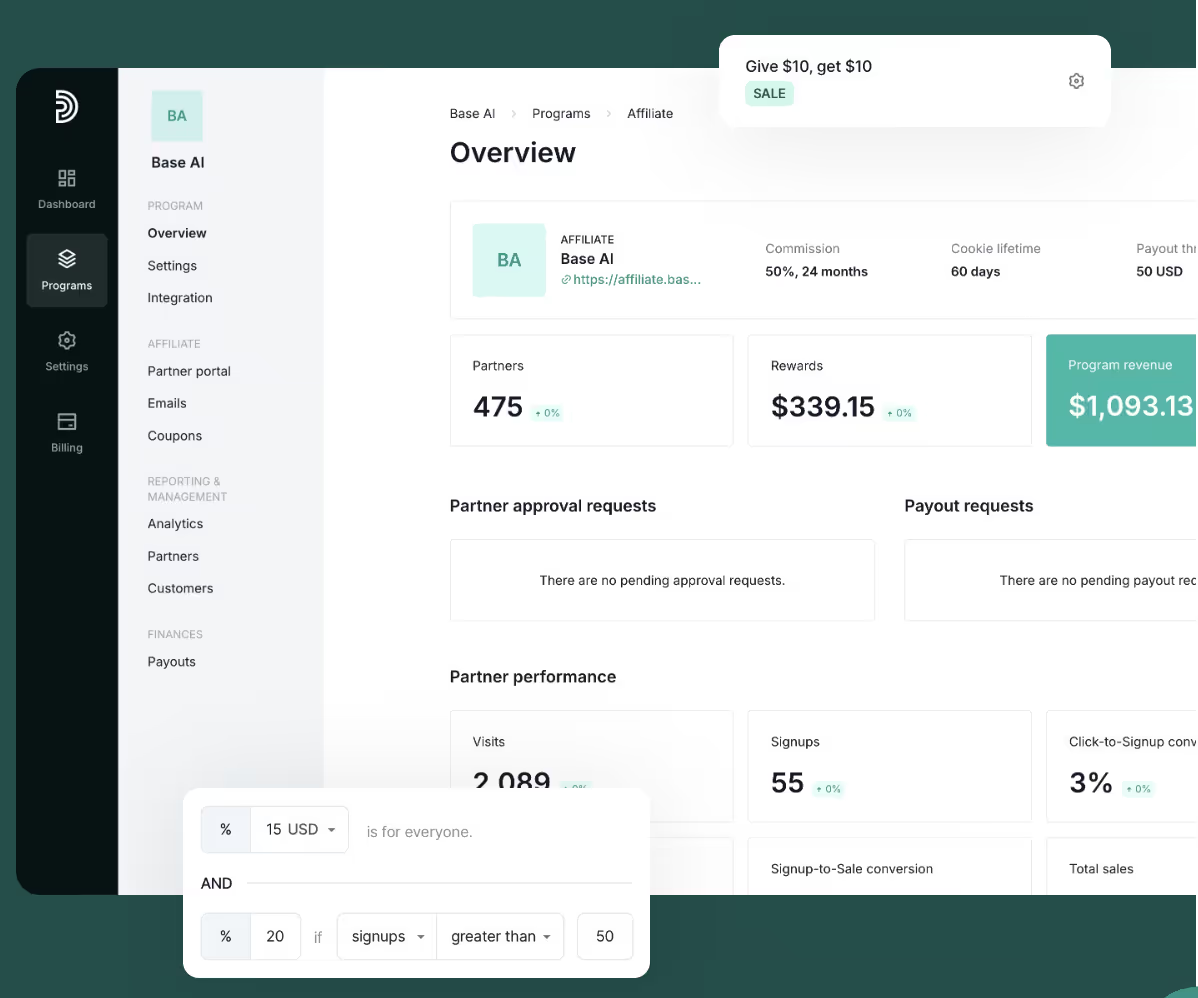
Partnero is an all-in-one partnership management platform designed for SaaS and e-commerce businesses to create, manage, and scale affiliate, referral, and newsletter referral programs.
Partnero supports automated payouts, offers fully customizable reward structures, white-label partner portals, and boasts seamless integrations with tools like Stripe, Shopify, PayPal, and WooCommerce.
Features include:
- All-in-one program management
- Customizable reward structures
- White-label partner portals
- Seamless integrations
- Automated payouts
- Real-time analytics
- Custom referral marketing links and coupons
- Partner enablement tools
- Developer-friendly API
Who Is Partnero Best For?
Partnero works best for companies running affiliate and influencer programs. Its lighter feature set works well for early-stage companies, but it's less ideal for scaling SaaS with mature CRMs.
Pricing: Partnero's starter bundle costs $49 per month, its Partner tier is $149 per month, and the Advanced option for larger companies comes in at $479 per month.
3. Kiflo
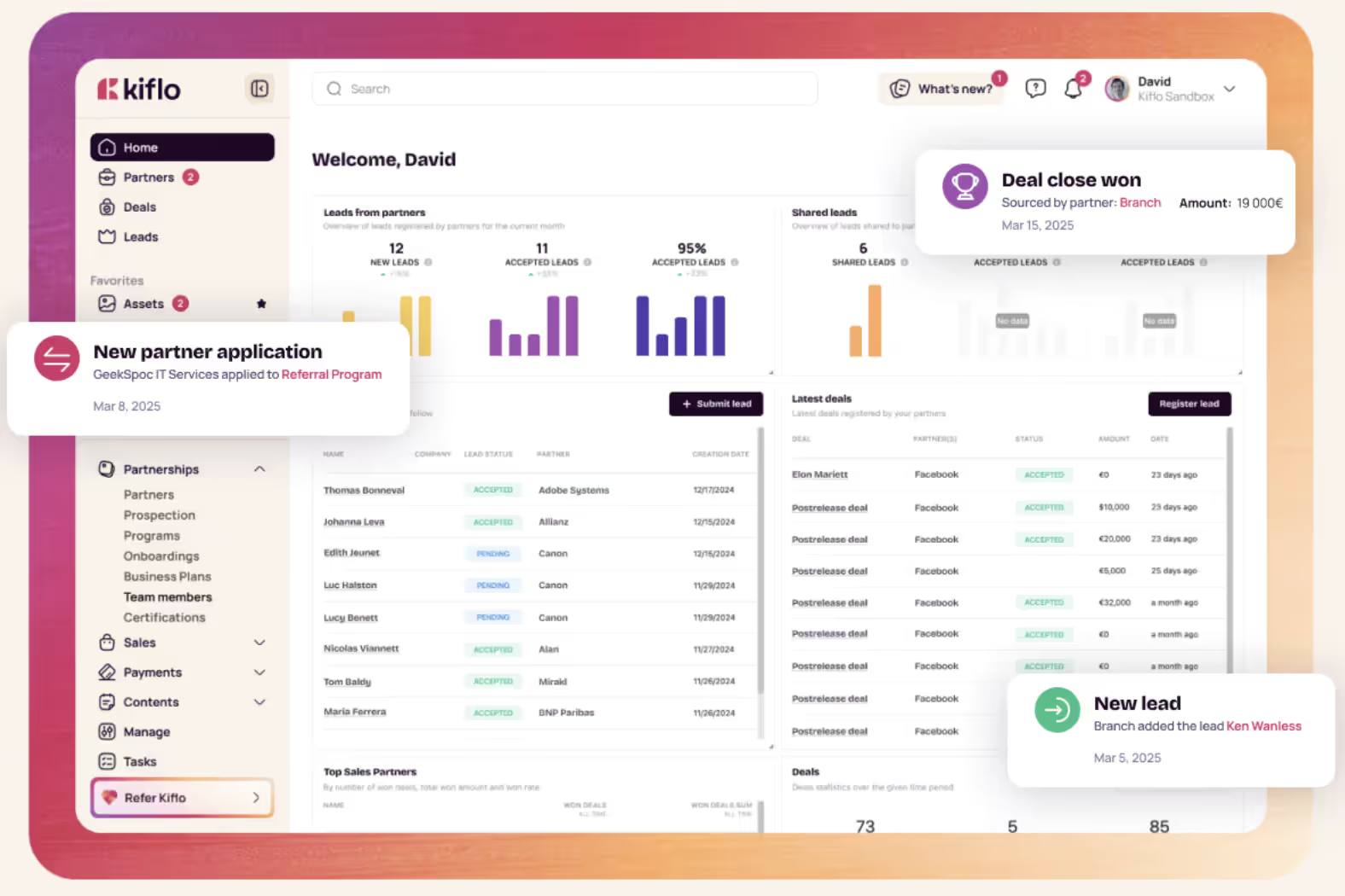
Kiflo is a PRM platform designed to help B2B companies grow and scale their partner programs.
It enables users to track partner-sourced revenue, manage leads, onboard and enable partners, and foster long-term, profitable partner relationships.
Specific features include:
- Partner onboarding and enablement
- Lead and deal management
- Revenue tracking and attribution
Who Is Kiflo Best For?
Kiflo is a great option for startups, with super easy onboarding.
However, it lacks a native Salesforce integration, so companies that rely on this CRM may want to consider alternatives.
Its analytics are also quite basic.
Pricing: Kiflo's Core tier — for teams just launching their partner program — starts at $359 per month. The Plus and Premier tiers operate on bespoke pricing plans.
4. Tolt
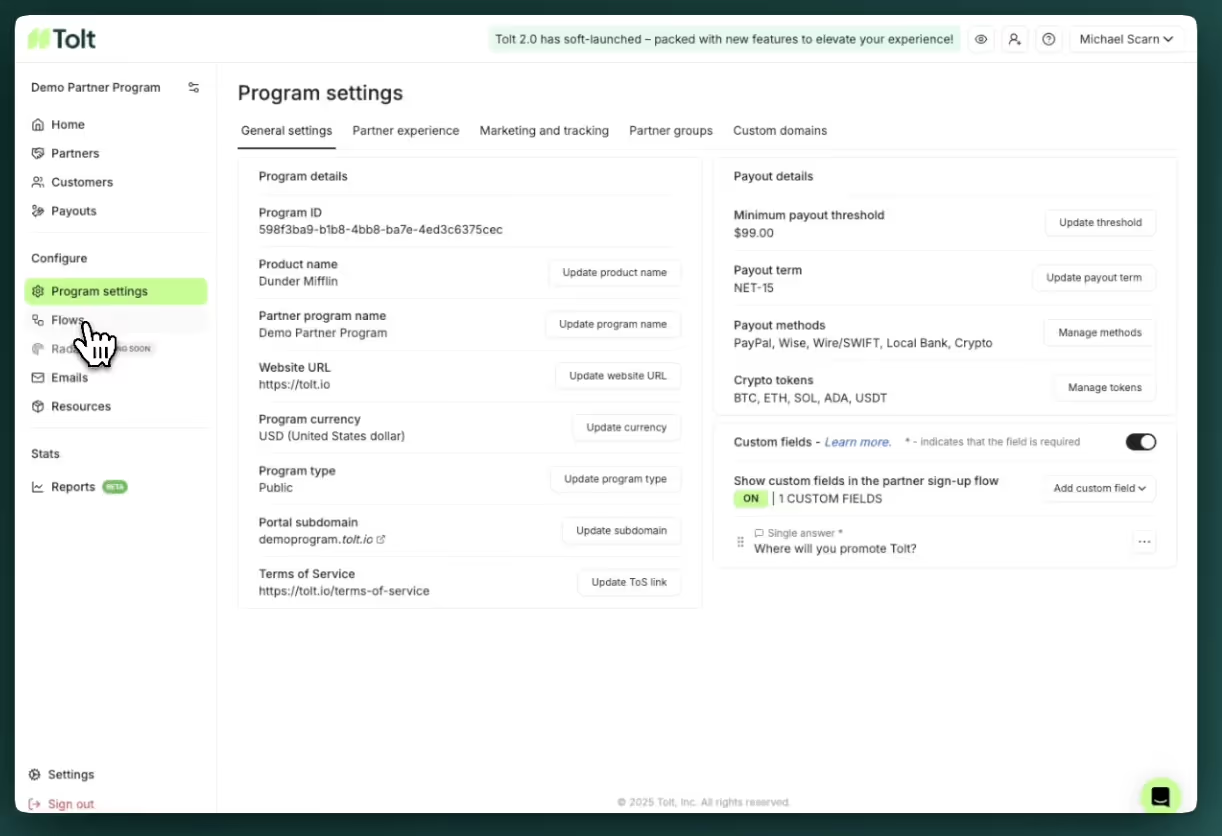
Tolt is an all-in-one affiliate marketing platform tailored for SaaS startups looking to swiftly launch and manage affiliate and referral programs.
With a heavy focus on partner onboarding, real-time analytics, and customizable commission structures, Tolt streamlines affiliate management, enabling startups to scale efficiently and cost-effectively.
Tolt's features include:
- Branded affiliate portals
- Real-time performance tracking
- Customizable commission structures
- Passwordless login for affiliates
- Quick setup within 15 minutes
Who Is Tolt Best For?
Tolt's focus is on partner onboarding, so it works well for companies that expect to attract a high number of new partners or simply want to impress their partners from the outset.
However, this tool is still maturing when it comes to deal registrations and pipeline management, and it doesn't natively support MAPs or Slack workflows — all of which make it a better option for startups and smaller businesses rather than mature partner programs.
Pricing: Tolt's Basic bundle starts at $49 per month, its Growth package is $99 per month, and the Pro option costs $199 per month.
5. Allbound
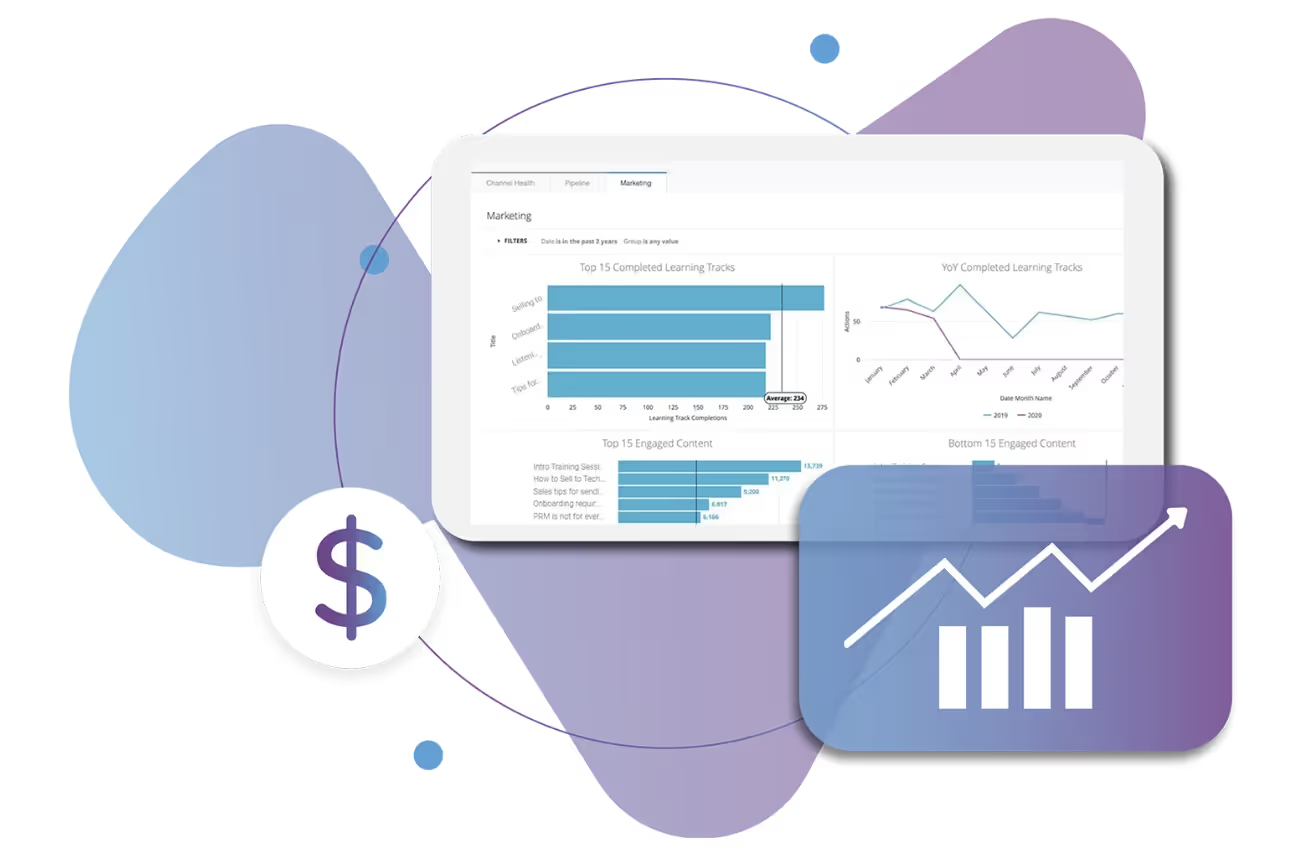
PRM Allbound is designed to streamline and automate every aspect of partner programs for B2B organizations.
It offers tools for onboarding, enablement, co-marketing, co-selling, and performance tracking, all within a unified interface.
Highlights include:
- Partner journey automation
- Content library and management
- Learning tracks and certifications
- Deal registration and playbooks
- Multi-tier distribution support
- Gamification and incentive dashboards
- Channel insights and reporting
- CRM integrations with real-time updates
Who Is Allbound Best For?
Allbound is a great option for mid-market to enterprise-level B2B tech businesses with mature or scaling partner ecosystems.
Pricing: Allbound's pricing is bespoke.
6. Impartner
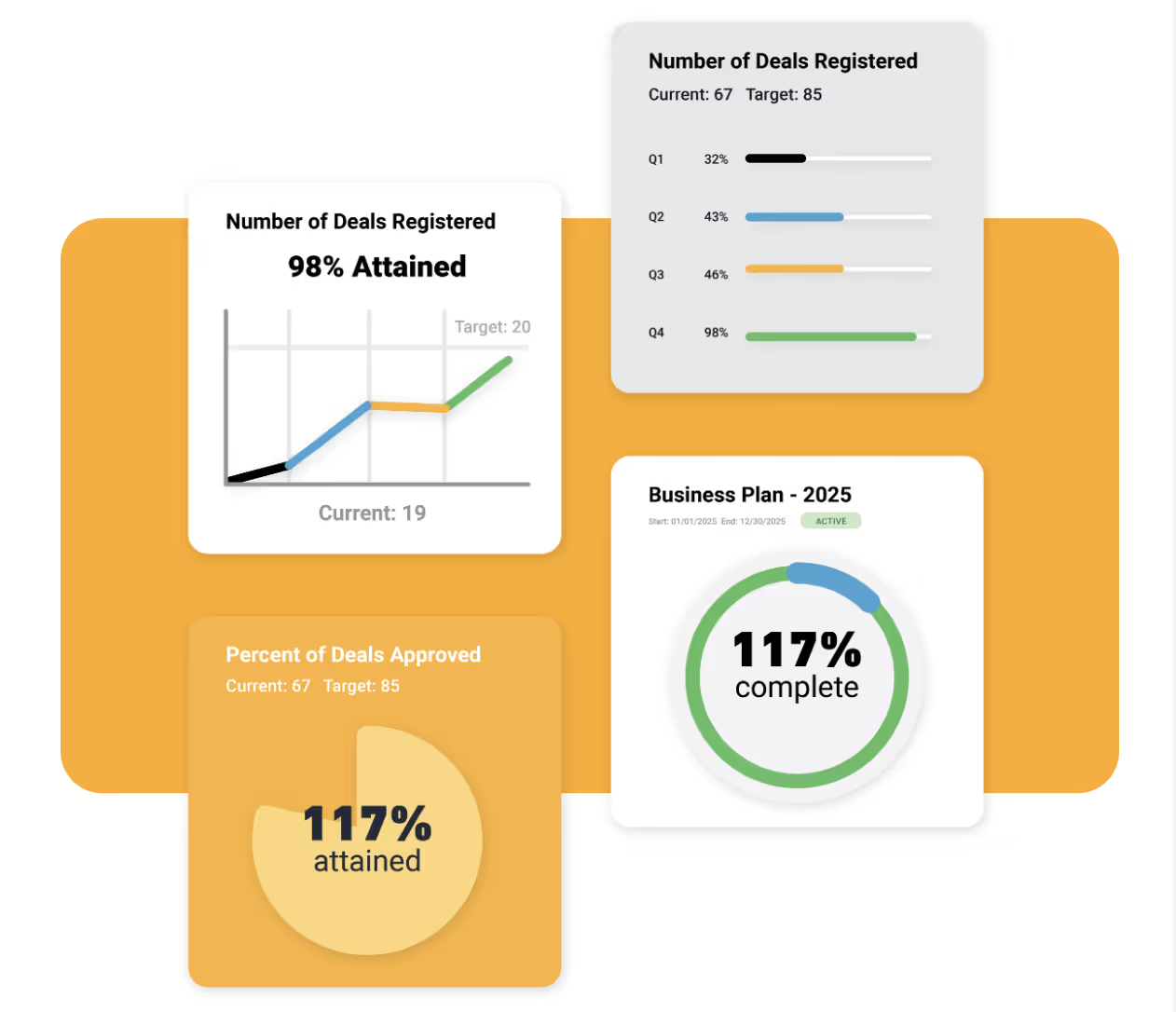
Comprehensive PRM platform Impartner is designed to help B2B companies manage and scale their partner ecosystems effectively.
It supports all types of partners, including reseller partners, distributors, affiliates, ISVs, and more.
Impartner offers comprehensive tools designed to help businesses enhance partner engagement, streamline operations, and drive revenue growth through indirect sales channels.
Highlights include:
- Automated partner onboarding and training
- Centralized partner portals with role-based access
- Deal registration and lead management
- Performance tracking and analytics dashboards
- Co-branded marketing asset creation
- Partner business planning and goal-setting
- Tiering and compliance automation
- CRM integrations with real-time data sync
- Referral and affiliate program support
Who Is Impartner Best For?
Impartner is a comprehensive PRM solution that works best for mid-sized to enterprise-level B2B companies with complex, global, or high-growth partner ecosystems.
Pricing: Impartner offers tailored pricing.
7. Impact.com
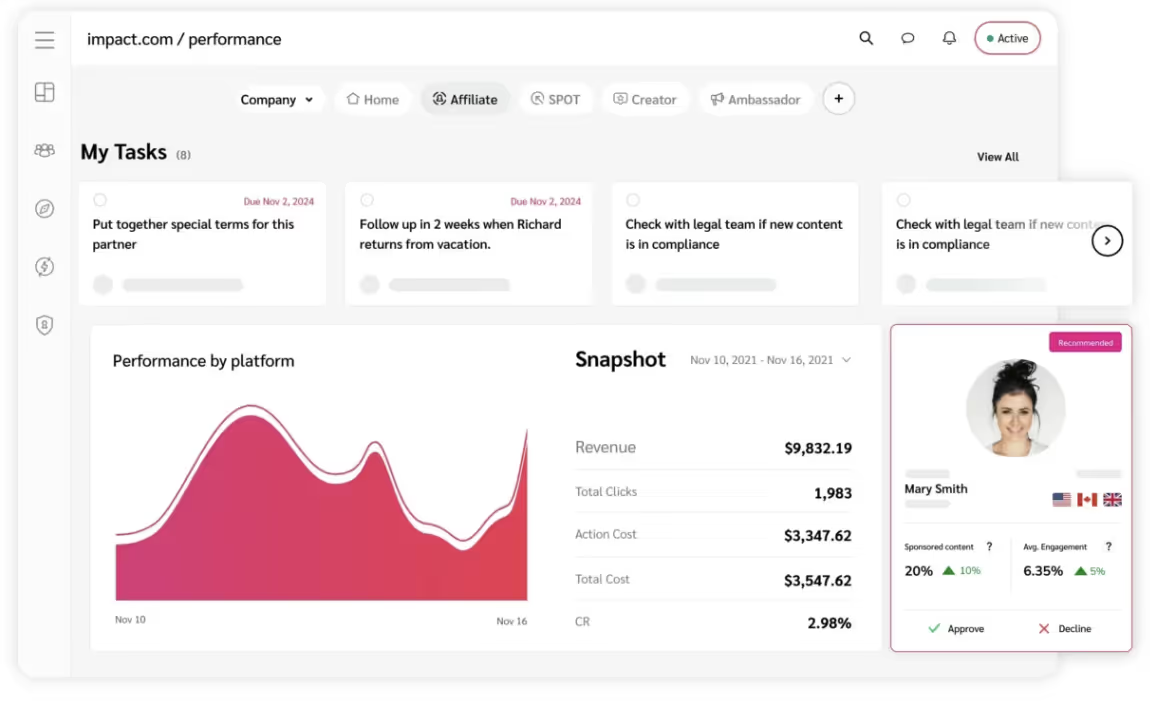
Impact.com is a comprehensive partnership management platform that enables businesses to manage and optimize various types of partnerships — including affiliates, influencers, creators, B2B partners, and referrals — within a single system.
Its features include:
- Partner discovery and recruitment automation
- Automated payments and contracts
- Real-time tracking and performance analytics
- Fraud detection and prevention
- Customizable attribution modeling
- CRM and e-commerce platform integrations
- Role-based access and permissions
- Automated partner onboarding workflows
- Benchmarking reports against industry peers
Who Is Impact.com Best For?
Impact.com is best for companies that want to build, manage, and scale diverse, performance-based partnerships in a unified platform.
It's particularly well-suited for large companies, e-commerce and DTC brands, and agencies and networks that are running partnership programs for multiple clients.
Pricing: Impact pricing is bespoke.
8. Rewardful
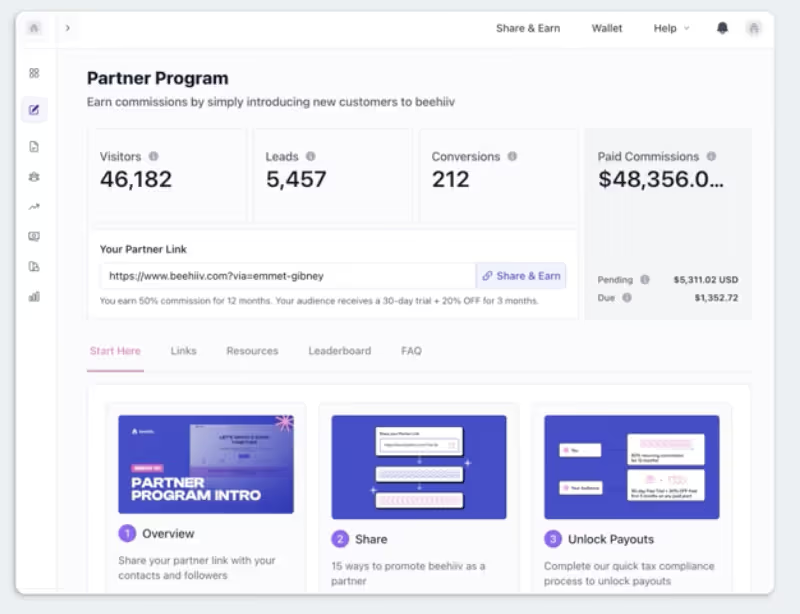
Rewardful is an all-in-one affiliate and referral management platform tailored for SaaS companies and subscription-based businesses.
It enables users to launch affiliate programs in under 15 minutes through seamless integrations with Stripe and Paddle.
Here are its top features:
- Easy Stripe and Paddle integrations
- Customizable commission structures
- User-friendly affiliate portal with branded customization
- Automated payouts via PayPal and Wise
- Real-time tracking of referrals and conversions
- Coupon code and link-based referral partners tracking
- Fraud detection and prevention mechanisms
- Affiliate finder tool
- White-label capabilities
- Analytics dashboard
Who Is Rewardful Best For?
Rewardful is best for bootstrapped to mid-sized SaaS companies that use Stripe or Paddle for billing and want fast, no-code affiliate setup.
It's also great for subscription businesses that need recurring or one-time commission models.
Pricing: Rewardful's Starter package costs $49 per month, and its Growth bundle is $99 per month, while Enterprise pricing starts at $149 per month.
9. Partnerize
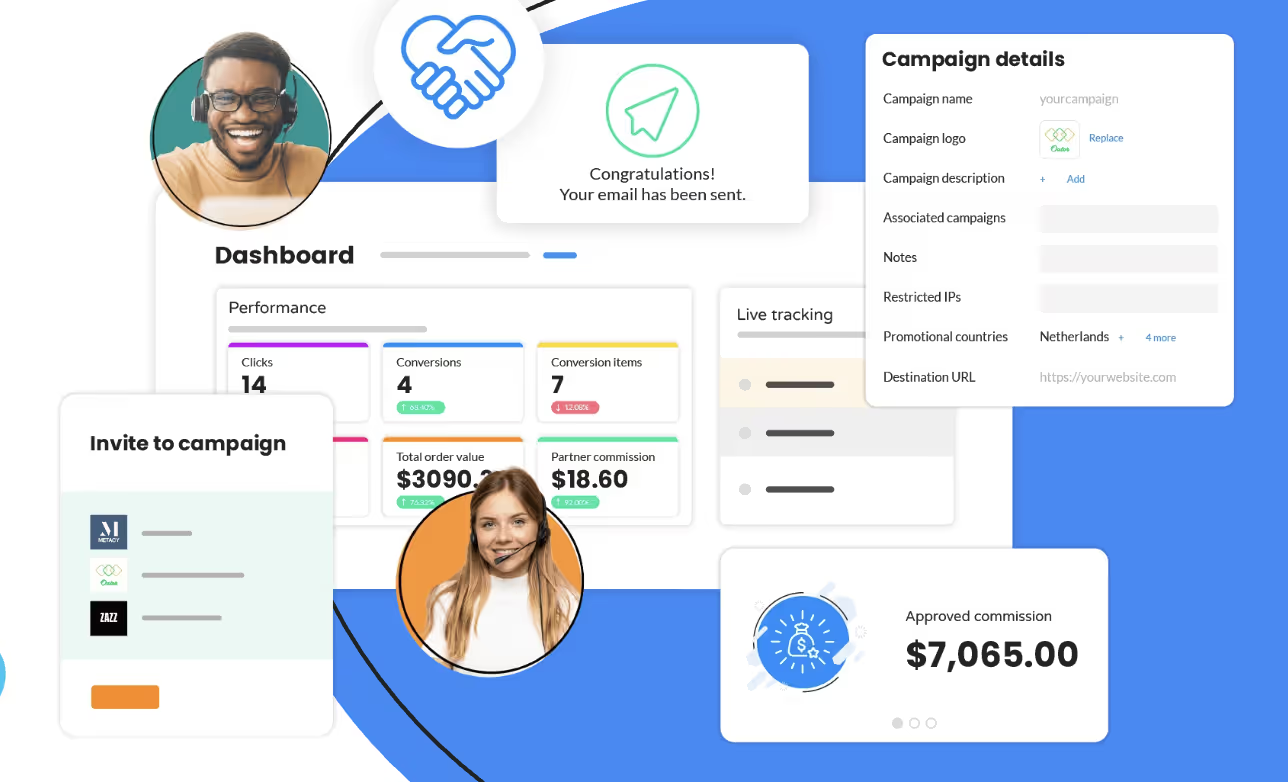
Partnerize is a comprehensive end-to-end partnership management platform designed to help brands discover, manage, and optimize diverse partner relationships at scale.
It supports various partner types, including affiliates, influencers, and content creators.
Its key features are as follows:
- Automated partner discovery and recruitment
- Dynamic commissioning based on performance metrics
- Real-time tracking and analytics dashboards
- Brand safety and fraud prevention tools
- Customizable reporting and attribution models
- Integration with major e-commerce and CRM platforms
- Role-based access controls and user permissions
- Dedicated partner portals
Who Is Partnerize Best For?
Partnerize is ideal for mid-sized to enterprise-level businesses seeking to scale their partnership programs efficiently.
It's especially beneficial for companies that manage a diverse range of partners and/or operate in multiple regions.
Pricing: Fees vary depending on your requirements.
How to Choose the Right PartnerStack Alternative
Ready to find the very best partner management platform for your business?
Here are three major points to consider.
1. Prioritize CRM Compatibility
It's vital that your PRM integrates seamlessly with your CRM — such as Salesforce or HubSpot.
A partner management platform that doesn't sync in real time can create data silos, duplicate efforts, and missed opportunities.
So, look for a solution that supports native, two-way CRM integration to ensure accurate reporting, streamlined workflows, and a single source of truth.
2. Focus on Channel Revenue, Not Just Signups
It's easy to get caught up in growing partner signups — but quantity doesn't equal quality.
The right PRM should help you measure what really matters: channel revenue.
Prioritize tools that track partner-sourced and influenced deals, connect activity to pipeline stages, and surface performance metrics.
3. Evaluate User Experience for Partners
A great partner experience drives engagement and results.
If your PRM requires complex logins or clunky portals, partners simply won't use it.
It's crucial to find tools that offer frictionless interaction — like replying to deal threads via email or Slack without logging in.
The right platform should also provide visibility into partner activity (opens, clicks, replies), allowing you to track engagement and follow up effectively without requiring constant manual check-ins.
Why Introw Leads the Pack in 2025
Introw stands out as the leading PartnerStack alternative by delivering a modern, revenue-focused approach to partner management with deep CRM integration.
This user-friendly PRM platform delivers a fully embedded experience in platforms like Salesforce and HubSpot and offers real-time co-selling capabilities, keeping your partners and pipeline in sync.
Meanwhile, its no-code portal builder enables tailored partner experiences, and its Slack and email integration makes communication easy, while a built-in AI Agent offers 24/7 support.
Purpose-built for SaaS, RevOps, and scale, Introw prioritizes actual revenue over vanity metrics.
➡️ Ready to experience the future of partner management? Request a live Introw demo here.
What Are The Best PartnerStack Alternatives?
There are several great alternatives to PartnerStack, and when choosing your partner management platform, it's essential to shop around to ensure the best fit for your company. Nine top PartnerStack alternatives to consider include Introw, Partnero, Kiflo, Tolt, Allbound, Impartner, Impact, Rewardful, and Partnerize.
What Should I Look For In A Partner Management Platform?
When considering which partner management software to choose, it's vital to prioritize CRM compatibility. So, for example, if you use HubSpot or Salesforce, it's vital to opt for a CRM-first software that deeply integrates with these tools, such as Introw. It's also important to focus on channel revenue, not just signups. In other words, the tool you choose should be closely tied to pipeline and performance. And don't forget to evaluate the user experience for partners too — it should be both engaging and friction-free to keep partners on side. Other essential features to look out for include real-time reporting, deal sync, and co-selling and RevOps alignment.
Is Introw A Good PRM For 2025?
Introw is one of the best PRMs on the market in 2025. Here's why we think it's the best alternative to PartnerStack. This sophisticated partnership relationship management platform delivers a CRM-first experience with deep integration. It also features a no-code partner portal builder, empowering your team to create personalized partner experiences. Meanwhile, Introw's real-time co-selling feature allows for instant communication and collaboration between sales reps and partners. Meanwhile, Introw's AI Agent provides 24/7 support to your partners. What else? Introw is purpose-built for SaaS companies, purpose-built for RevOps, and purpose-built for scaling growing businesses. In short, it's designed to help your partner program generate actual revenue, not just hit vanity metrics.


.svg)



















